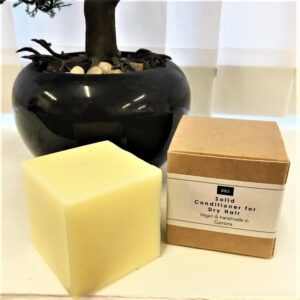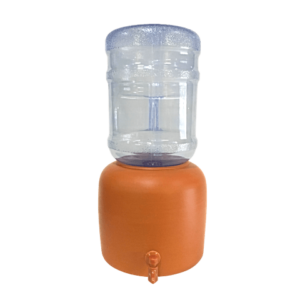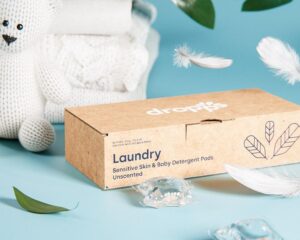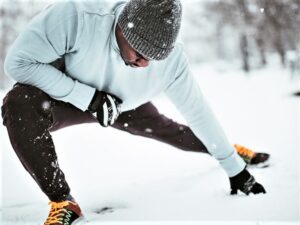BY DEBRA KEEFER RAMAGE

Hair care products in solid bar form, zero-plastic
The connection
For the past decade or so, I have been thinking a lot, and acting – a bit less, but still acting – on ways to reduce my personal harm to the environment in the process of consumption. As the four “R”s tell us (reduce, reuse, repair, recycle), a major way to do that is to consume less – to reduce. But breaking that down a little, you can also “consume less” even of things you have to consume to stay alive and healthy, by choosing things with less packaging, less waste, less harm in the disposing of what’s left. And this is nowhere so prevalent an issue for individual consumers as it is for health and body care products, household cleaning and maintenance products and, of course, food. So here are some of my thoughts and discoveries about balancing a healthy body and lifestyle with a less impactful consumption and hopefully a healthier planet.
Water is life
It’s vital to your health to drink enough water. (Although you can drink too much!) Ideally, you want purity and alkalinity in your drinking water. And, if you drink coffee, tea or broth, or make homemade lemonade, or eat a lot of rice or other grains, you should be using pure or at least filtered water to prepare those as well. Drinking a lot of water and eating foods rich in water is especially important in winter, when our indoor air may be really dry and the cold air outside dries our skin and eyes and sinuses.
Unfortunately, the default consumerist solution to this is to purchase water in plastic containers. Part of the cruel irony of this is the staggering amounts of water required to produce the plastic containers holding the water, not to mention the pollution they cause in their afterlife, and the carbon poured into the atmosphere by shipping water from one place to another.

Home water cooler, equivalent of 80 eight-ounce bottles, and they refill it!
There are alternatives. A simple alternative if you still need to buy water is that now you can buy it in a cardboard box, like milk or juice, which is a small improvement. boxedwaterisbetter.com/ has more information; their products are available at the co-op, and there are some other boxed water brands out there as well.
Another solution, of course, is to “make your own.” We’re lucky in that our municipal tap water is neither lethally unhealthy nor criminally expensive, and you can get by with simply filtering water you use for direct consumption. This will probably involve plastic. But not nearly as much as single-use bottles. I won’t bother to recommend a reusable bottle – you probably already have at least one. The trick here is not to over-consume drinking water bottles! You only need one, but rare is the person disciplined enough to buy only one.
Another solution, probably better than the filtering option if you’re using a lot of water, and have good local options for this, is to buy or rent a water dispenser and have 5-gallon bottles delivered to install on it. I used this for a few years a long time ago and, as I recall, it was great. Also, you can now buy or rent a water dispenser that is also a filtration device and uses your own tap water feed. A local company, Premium Waters, provides both services. See premiumwaters.com/.
Aiming for zero-new-plastic
There are several online sources of supplies I can recommend for helping you reduce consumption of plastic in its most egregious form – which is new, single-use and, even worse, often not recyclable. Some of these or similar products can be had from Amazon, Walmart or Target. However, I would encourage you to buy from companies that are wholly dedicated to reducing unnecessary packaging, rather than these big-box behemoths, most of whose products are overpackaged in single-use plastic. It kind of defeats the overall purpose of doing your own best at reining in consumption if you’re supporting huge systems devoted to and dependent on just the opposite.

Earth-friendly laundry pods – zero-plastic
Etee (etee.com) sells various types of soap products either in bar form or in a highly concentrated liquid packaged in a beeswax tube. They also sell various alternatives to plastics such as bamboo toothbrushes, loofah and cellulose pot scrubbers, and drinking straws made of a choice of glass, steel or silicone. They sell multi-use containers which may have a small amount of plastic, such as a pump-lid for a glass jar, but are designed for years of use rather than just one or two.
Etee has great products, great customer service, a blog with loads of information, and an affiliate program if you want to try selling for them. They offer free shipping over a certain threshold, and all their packing and shipping materials are paper, cardboard or other compostable material.
Another similar company, although with a narrower focus, is Dropps (dropps.com). Dropps makes concentrated pods of detergents for laundry or dishwashers. The pods themselves are completely soluble and nontoxic, no plastic microparticles. The detergents are the most environmentally friendly you can find, in natural scents or unscented. The packaging is just a small cardboard box. I love these things; laundry day is no longer a big guilt-fest.
In addition to these products, plastic-free or reduced-waste versions of almost every health and beauty product have become available. Stick deodorant in a cardboard tube, liquid spray deodorant in a glass bottle, shampoo and conditioner in a bar, non-plastic dental floss in a cardboard dispenser, tooth powder sold in bulk, lotions and makeup products in refillable glass jars, reusable makeup brushes and natural sponges, washable cotton menstrual or incontinence products; all of these are increasingly available. Check out our local zero-waste shop, Tare Market, for these and more.
Almost zero-carbon workouts

Zero-net carbon winter workout – one option
Workouts are good for keeping you healthy. The only thing that’s really bad is if you drive a long way from your home to your gym. One way around that is a thing I did when I was younger (but not young, I was in my early 50s) and living in England. I belonged to a small gym about a mile from my house. When the weather was nice, I walked briskly to the gym. The walk there was my warm-up, and a more leisurely walk home, maybe with a pit stop for a cool drink, was my cool-down. Since I used only human-powered machines, this was close to a zero-carbon workout. If you live too far for that, you could drive to within a set distance, park, and walk for your warm-up. Base this on your own fitness level and needs. This works for yoga studios, Pilates, and personal trainers in their homes as well.
Another option, though currently out of my price range, is to have a personal trainer come to your home and work out with you. I also did this in England, when I was working up to the point of joining the gym and going solo. It was great; I have fond memories of my personal trainer, who built clever impromptu obstacle courses in my backyard and made me run them.
Hibernate like the mammal you are

Holding a family game night? techboomers.com/zoom-tips-family-game-night
Have you ever noticed how bears look oddly human? Well, the bears think we look oddly bearlike. They can’t understand, though, how we survive the winter, without either fur or hibernation. They have a point. Although we have lost the constitution to be able to sleep through the entire season, it is good for you to sleep more during the months when the nights are long and cold.
That’s all there is to it. Just try arranging your schedule so you sleep more. Try to limit your sleep to the numerous dark hours and preserve the precious sunlight for activity. Following the lead of our fellow mammals, you may find you want to eat less as you sleep more. Or, if sleeping long hours doesn’t work for you, try a daily meditation instead of a nap. Winter is signaling us to slow down; don’t ignore it.
How to have a social life during a pandemic or other emergency, like winter

Bamboo electric
toothbrush
Ha ha. I don’t really think winter is an emergency. I wouldn’t live in Minnesota if I did. But sometimes winter brings emergencies – flu, snowstorms, waves of the pandemic – we may have all of these and more in a given winter. Thank God for Zoom, and Google Meet, and Facebook Live, and Discord, and FaceTime.
Another piece of attuning to the seasons is to stay in your den during the cold season. Socialize virtually, watch soothing performances at home, listen to seasonal and calming music. If you live with other people in a household, have a quiet evening together playing games, sipping herbal tea or non-dairy fair-trade cocoa, and then go early to bed. If you live alone, do the same thing with your pod, your posse, or your family, but virtually. Family Zoom get-togethers, book clubs on Facebook Live, and games night on Discord are all possible.
It’s no use being in the most perfect of health if we allow our planet to become uninhabitable. That would be the ultimate waste. Be well, and be thoughtful.






















